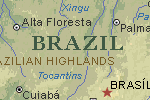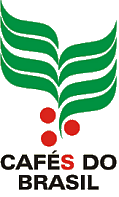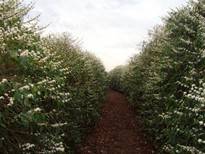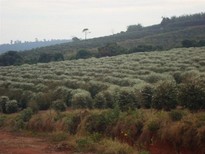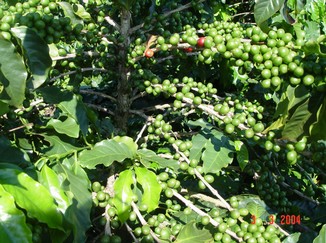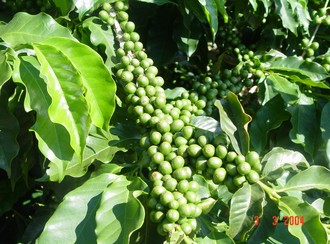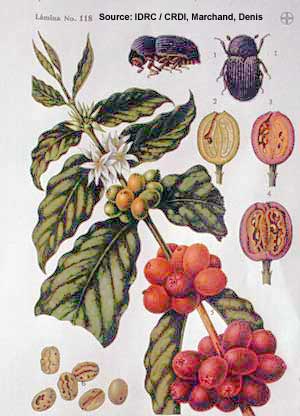Main menu:
Brazil
Introduction |
||||||
Flag: |
||||||
Card: |
||||||
Background: |
Following three centuries under the rule of Portugal, Brazil became an independent nation in 1822. By far the largest and most populous country in South America, Brazil has overcome more than half a century of military intervention in the governance of the country to pursue industrial and agricultural growth and development of the interior. Exploiting vast natural resources and a large labor pool, Brazil became Latin America's leading economic power by the 1970s. Highly unequal income distribution remains a pressing problem. |
|||||
Geography |
||||||
Location: |
Eastern South America, bordering the Atlantic Ocean |
|||||
Geographic coordinates: |
10 00 S, 55 00 W |
|||||
Map references: |
South America |
|||||
Area: |
total : 8,511,965 sq km |
|||||
Coastline: |
10 00 S, 55 00 W |
|||||
Climate: |
mostly tropical, but temperate in south |
|||||
Terrain: |
mostly flat to rolling lowlands in north; some plains, hills, mountains, and narrow coastal belt |
|||||
Elevation extremes: |
lowest point: Atlantic Ocean 0 m |
|||||
Geography - note: |
largest country in South America; shares common boundaries with every South American country except Chile and Ecuador |
|||||
People |
||||||
Population: |
174,468,575 |
|||||
Nationality: |
noun: Brazilian(s) |
|||||
Ethnic groups: |
white (includes Portuguese, German, Italian, Spanish, Polish) 55%, mixed white and black 38%, black 6%, other (includes Japanese, Arab, Amerindian) 1% |
|||||
Religions: |
Roman Catholic (nominal) 80% |
|||||
Languages: |
Portuguese (official), Spanish, English, French |
|||||
Government |
||||||
Country name: |
conventional long form: Federative Republic of Brazil |
|||||
Government type: |
federative republic |
|||||
Capital: |
Brasilia |
|||||
Independence: |
7 September 1822 (from Portugal) |
|||||
Flag description: |
green with a large yellow diamond in the center bearing a blue celestial globe with 27 white five-pointed stars (one for each state and the Federal District) arranged in the same pattern as the night sky over Brazil; the globe has a white equatorial band with the motto ORDEM E PROGRESSO (Order and Progress) |
|||||
Economy |
||||||
Economy - overview: |
Possessing large and well-developed agricultural, mining, manufacturing, and service sectors, Brazil's economy outweighs that of all other South American countries and is expanding its presence in world markets. In the late eighties and early nineties, high inflation hindered economic activity and investment. "The Real Plan", instituted in the spring of 1994, sought to break inflationary expectations by pegging the real to the US dollar. Inflation was brought down to single digit annual figures, but not fast enough to avoid substantial real exchange rate appreciation during the transition phase of the "Real Plan". This appreciation meant that Brazilian goods were now more expensive relative to goods from other countries, which contributed to large current account deficits. However, no shortage of foreign currency ensued because of the financial community's renewed interest in Brazilian markets as inflation rates stabilized and the debt crisis of the eighties faded from memory. The maintenance of large current account deficits via capital account surpluses became problematic as investors became more risk averse to emerging market exposure as a consequence of the Asian financial crisis in 1997 and the Russian bond default in August 1998. After crafting a fiscal adjustment program and pledging progress on structural reform, Brazil received a $41.5 billion IMF-led international support program in November 1998. In January 1999, the Brazilian Central Bank announced that the real would no longer be pegged to the US dollar. This devaluation helped moderate the downturn in economic growth in 1999 that investors had expressed concerns about over the summer of 1998. Brazil's debt to GDP ratio for 1999 beat the IMF target and helped reassure investors that Brazil will maintain tight fiscal and monetary policy even with a floating currency. The economy continued to recover in 2000, with inflation remaining in the single digits and expected growth for 2001 of 4.5%. Foreign direct investment set a record of more than $30 billion in 2000. |
|||||
Currency: |
real |
|||||
Currency code: |
BRL |
|||||
Transportation |
||||||
Railways: |
total: 30,539 km (2,129 km electrified); note - excludes urban rail |
|||||
Highways: |
total: 1.98 million km |
|||||
Waterways: |
50,000 km |
|||||
Pipelines: |
crude oil 2,980 km; petroleum products 4,762 km; natural gas 4,246 km (1998) |
|||||
Ports and harbors: |
Belem, Fortaleza, Ilheus, Imbituba, Manaus, Paranagua, Porto Alegre, Recife, Rio de Janeiro, Rio Grande, Salvador, Santos, Vitoria |
|||||
Coffee |
||||||
|
||||||
|
|
|||||
|
|
|||||
International Organizations: |
Member of the I.C.O. - "Unwashed Arabicas" group - Code W 2. |
|||||
Cultivated Area: |
3,480,000 hectares. |
|||||
Harvested Area: |
3,370,000 hectares. |
|||||
Farms: |
||||||
Regions of Production: |
Aproximately 13 states produce coffee but 4 states represent 88 % of production. |
|||||
PARANÁ |
||||||
East of Londrina |
||||||
Old coffee-growing area: |
Zonen Jacarazihno, Comelio Procopio, Sankt Mariana, Novo Fatima, Ibaiti, Vences-lau-Bras |
|||||
West of Londrina |
||||||
Newer coffee-growing area: |
Better cup qualities. |
|||||
SAO-PAULO |
||||||
District of Alta Mogiana |
Main coffee city: Ribeirao Preto |
|||||
District of Baixa Mogiana |
Main coffee city: Sao Joao da Boa Vista |
|||||
District of Media Paulista: |
Main coffee city: Bauru |
|||||
District of Alta Araraquarense: |
Main coffee city: Sao Jose do Rio Preto |
|||||
District of Baixa Araraquarense: |
City Catanduva. Klassifikationen, screen Tasse und Qualitäten schwanken sehr entsprechend Region oder Farm. |
|||||
District of Noroeste: |
Main coffee cities: Aracatuba, Lins |
|||||
District of Alta Paulista |
Main coffee city: Marilia |
|||||
District of Media Paulista / Sao Paulo Goias |
Main coffee city: Olimpia |
|||||
District of Baixa Paulista |
Main coffee cities: Araquara, Campinas |
|||||
District of Alta Sorocabana |
Main coffee city: Presidente Prudente |
|||||
District of Media, Baixa Sorocabana |
Main coffee city: Sorocaba |
|||||
District of Santos Jundiai and Central do Brasil |
Main coffee city: Sao Paulo |
|||||
MINAS GERAIS |
||||||
Zona da Mata |
"Rio" (hardish cup) sometimes "free from Rio Flavour". |
|||||
Western Minas |
Flat bean. |
|||||
Sul Minas |
Excellent coffee (the best of Brazil). |
|||||
RIO DE JANEIRO |
||||||
Very pronounced typical "Rio" cup, |
||||||
Regions of Production: |
ESPIRITU SANTO |
|||||
North: |
Colatina District |
|||||
Northeast and Center: |
Sao Gabriel da Palha, Nova Venecia, Valeria, Fartura, Linhares: Conillon. |
|||||
South |
Flowering November. |
|||||
BAHIA |
||||||
Chapada region |
Unwashed and washed Arabica. |
|||||
PERNAMBUCO |
||||||
Garanhuns region |
First shipment: Unwashed: September |
|||||
RONDONIA |
||||||
Number of coffee trees: 147 million Conillon. |
||||||
MATO GROSSO |
||||||
Number of coffee trees: 40 million Conillon. |
||||||
GOIAS and FEDERAL DISTRICT |
||||||
Number of coffee trees: 22 million Conillon. |
||||||
ACRE - AMAZONAS - CEARA - MARANHAO - PARA - PARAIBO - SANTA CATARINA - SERGIPE |
||||||
Frost-free regions where coffee cultivation could be revived. |
||||||
Classification : |
by Botanical Species |
Arabica. |
||||
by Botanical Variety |
eg. Maragogype. |
|||||
by Geographic |
Origin |
|||||
by Port |
eg. Santos |
|||||
by State |
eg. Sao Paulo |
|||||
by Region |
eg. "Alta Araraquara" ('Alta" does not refer to the altitude). In the very vast state of Sao Paulo, it is not easy to specify the zones. The Paulists (inhabitants of Sao Paulo) named the spread out sections of its territory after the rairoads that served them. As the railroad lines were gradually extented, the names of the furthest territories were preceded by the adjective "Alta ". |
|||||
by number of Defects |
Type 2 to 8, there are at least three methods of classification |
|||||
Classification: |
Table of Equivalences (number of defects per 300 grammes sample) |
||||||
TYPE |
C.O.B. |
NEW-YORK |
LE HAVRE |
||||
2 |
4 defects |
6 defects |
8 defects |
||||
2/3 |
8 defects |
9 defects |
12 defects |
||||
3 |
12 defects |
13 defects |
17 defects |
||||
3/4 |
19 defects |
21 defects |
23.5 defects |
||||
4 |
26 defects |
30 defects |
30 defects |
||||
4/5 |
36 defects |
45 defects |
58.5 defects |
||||
5 |
46 defects |
60 defects |
87 defects |
||||
5/6 |
64 defects |
123 defects |
|||||
6 |
86 defects |
158 defects |
|||||
|
The count of defects correspond to the following table |
||||||
Diseased bean |
C.O.B. |
NEW-YORK |
LE HAVRE |
||||
Stone, twig or hull (large) |
5 defect for 1 |
2 defect for 1 |
|||||
Stone, twig or hull (medium) |
2 defect for 1 |
1 defect for 1 |
|||||
Stone, twig or hull (small) |
1 defect for 1 |
1 defect for 2 to 3 |
|||||
Black bean |
1 defect for 1 |
1 defect for 1 |
1 defect for 1 |
||||
Cherry |
1 defect for 1 |
1 defect for 1 |
|||||
Large husk |
1 defect for 1 |
1 defect for 1 |
|||||
Half-black bean |
1 defect for 1 |
1 defect for 2 |
1 defect for 2 |
||||
Sour bean |
1 defect for 2 |
1 defect for 2 |
|||||
Small husk |
1 defect for 2 to 3 |
||||||
Parchment bean |
1 defect for 2 |
1 defect for 2 |
|||||
Shell |
1 defect for 3 |
1 defect for 3 |
1 defect for 3 |
||||
Unripe bean |
1 defect for 5 |
||||||
Quaker |
1 defect for 5 |
1 defect for 5 |
|||||
Broken bean |
1 defect for 5 |
1 defect for 5 |
1 defect for 5 |
||||
Eaten bean |
1 defect for 2 to 5 |
0.5 % of weight |
1 defect for 10 |
||||
Dried-out bean |
1 defect for 5 |
1 defect for 5 |
|||||
Undesirable bean |
1 defect for 5 |
1 defect for 5 |
|||||
Internationale Klassifierungstabelle (Englisch) |
|||||||
Classification as per USA/Europe |
Fancy : good appearance, no black beans = + type 213 N. Y. |
||||||
Classification |
By size of bean |
||||||
Good to large bean |
70 % screen 17. 30 % screen 16. Le Havre Classification Good bean : 80 % screen 16. 20 % screen 15. Medium to good bean : 40 % screen 16. 60 % screen 15. Peaberry |
||||||
Classification |
By Cup taste |
||||||








